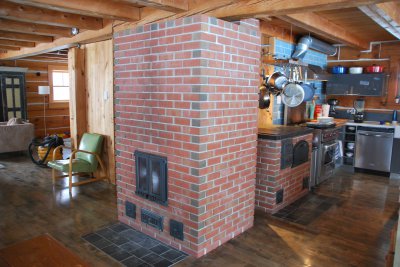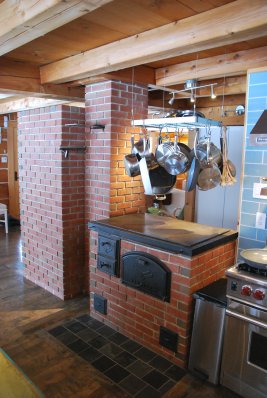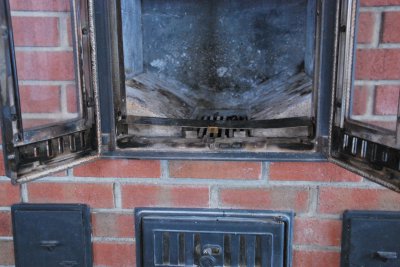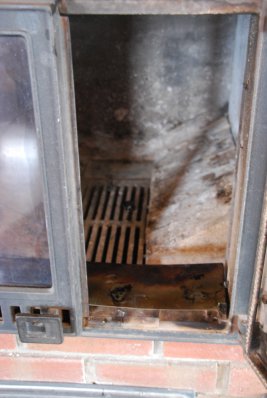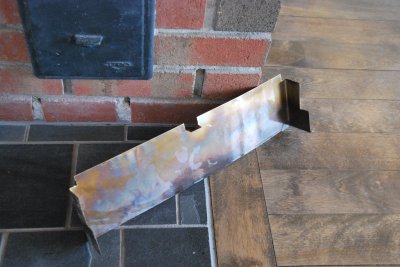Over air conversion
There have been 3 owners of the house since the stove was built. I had not been back to look at the stove until the current owner contacted me this autumn saying he needed advice.
On visiting the house I was told that the masonry heater had been used as a slow combustion stove for several years before the house was bought by the current client. He was having short hot fires, but had no real idea how to use the stove.
About 15 years ago the guillotine damper had started to bind. After being left closed to rust for a season the guillotine plate would only pull 20%, where it had jammed. Consequently the stove had been fired, by necessity, for several years with its bypass damper completely open. After the fire the bypass would be closed, essentially being used as a shut off damper.
As the smoke stream was no longer being drawn down the side channels, and up the chimney via the rear manifold, it was entering the chimney directly from the upper chamber. The chimney flue, below the bypass, and the side channels, which had become inactive, had filled with compressed fly ash. The objective of the intervention was:- To free the shut off damper, and make it operable.
- Removal the compressed fly ash from the manifolds and chimney flue.
- Conversion of the stoves primary air intake, from under air to Over air.
- Instruction for the client on how to use the masonry heater, during one fire lit from the top.
The over air conversion was straight forward due to the type of fire box door installed. This Upo door has a large draft slide in the bottom of each of the two doors. The position of the draft slides, and the amount of air they let enter, means that all the primary air can be taken through the door, and deflected on to the wood load. Other door models have small secondary air draft slides, or one slide on the top and one on the bottom of the door, making this set up impractical.
